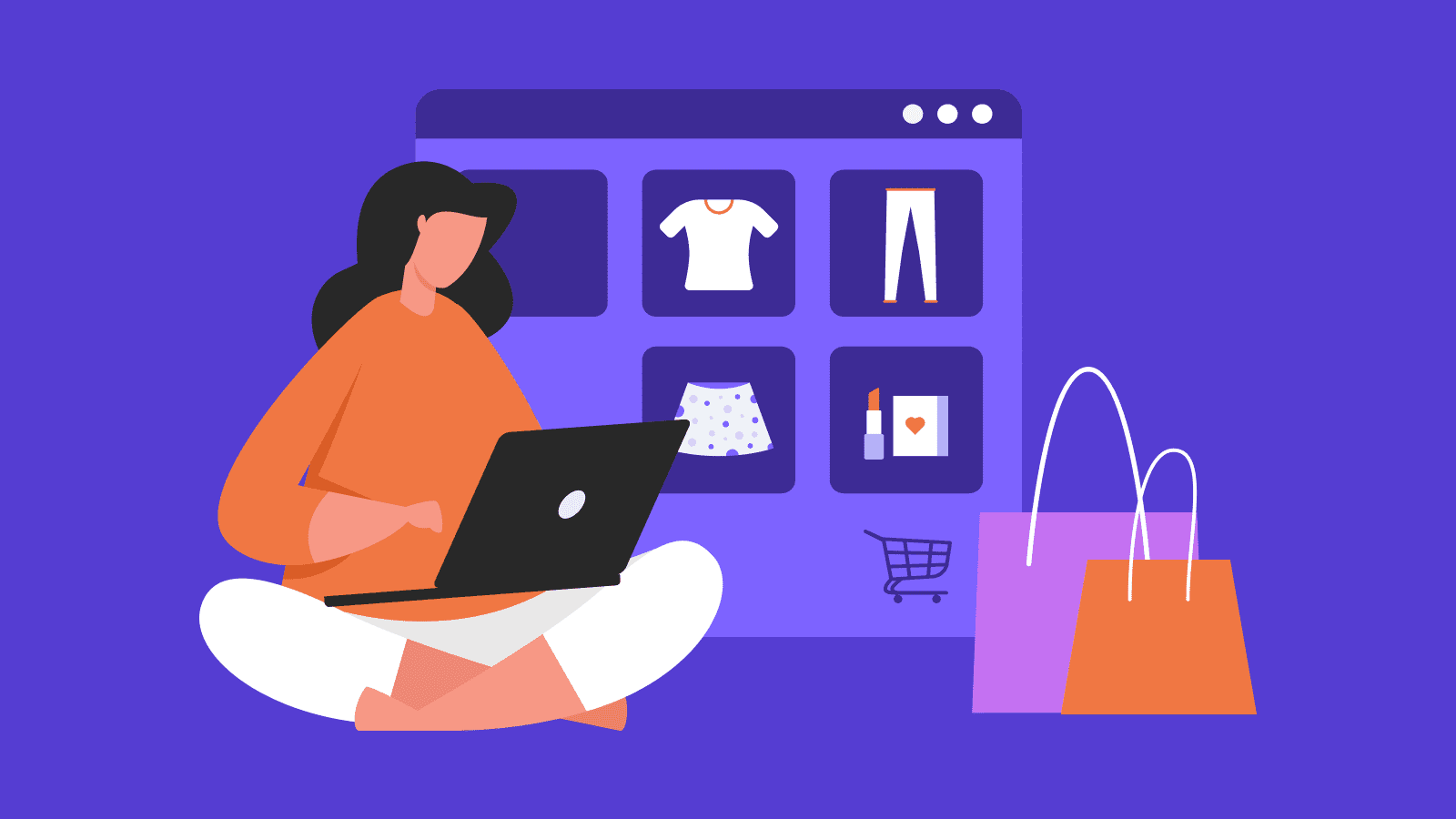When we think of eCommerce revenue growth, we often gravitate toward tactics and strategies for attracting new customers, optimizing the shopping experience, and expanding our reach.
But this isn’t the only way to deliver revenue growth (and it may not even be the most effective).
In eCommerce, customer retention is just as critical as new customer acquisition. A comprehensive retention program can improve average order values, drive purchase frequency, and even expand your reach through referrals and word of mouth.
In this article, we’re going to look at eCommerce customer retention strategies to delight your customers and keep growing revenue.
14 Highly Effective eCommerce Customer Retention Strategies
1. Send Exclusive Promotional Emails For Repeat Buyers
One of the best ways to make your existing customers feel valued (and that you care about them, not just closing new sales) is to send out exclusive deals.
This one is pretty simple to put into practice. Put together a compelling offer, send it out via email to your existing customers, but make sure not to offer it to the general market.
For example, this promotional email from Native Instruments (sent only to existing customers) includes a seriously compelling deal: 50% off all updates and upgrades.
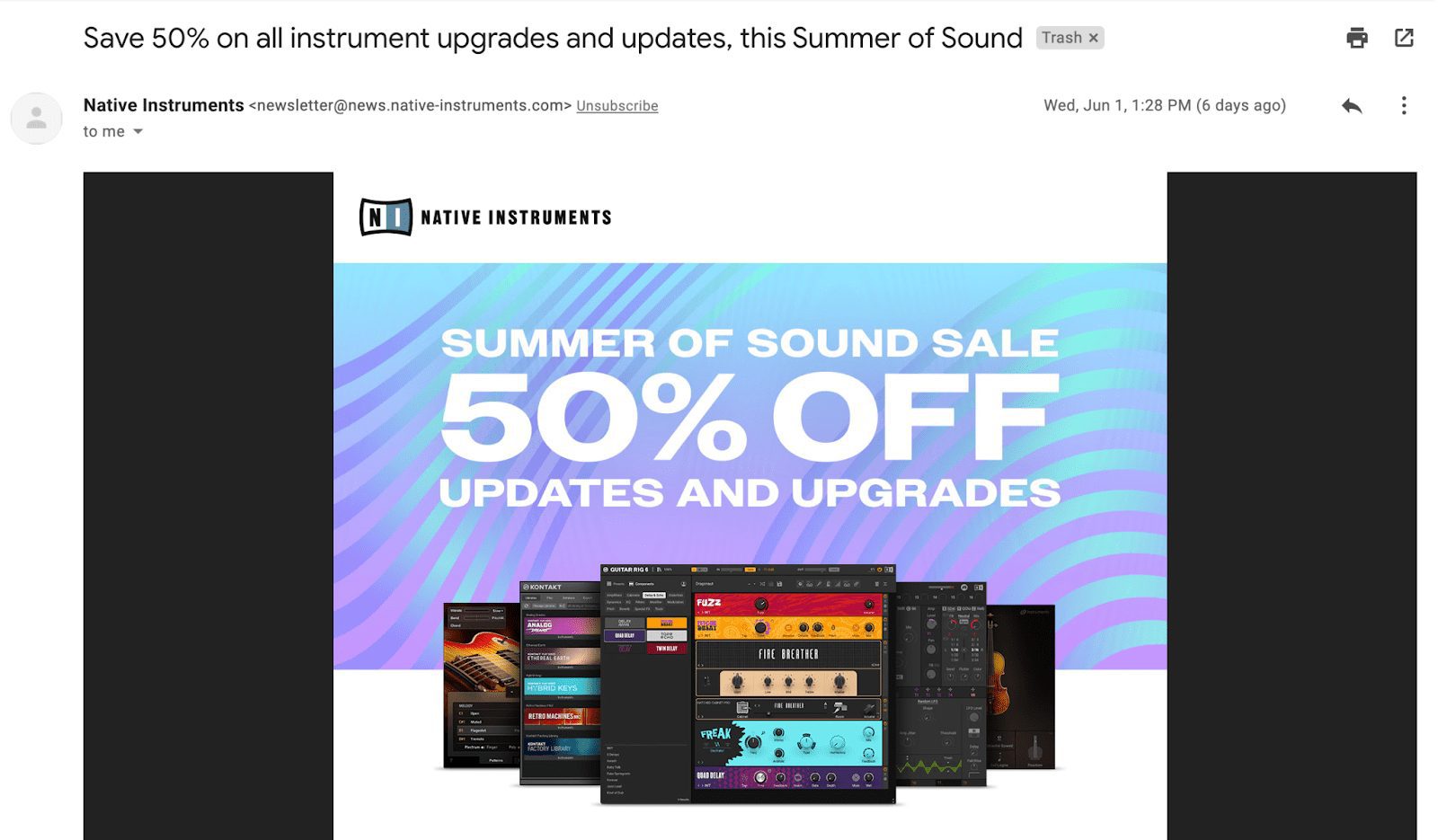
This is a powerful strategy for two reasons.
First, compelling offers like this are bound to convert (so you’re going to upwardly influence key retention metrics like purchase frequency and repeat customer rate).
Secondly, it makes existing customers feel that they’re part of a community, where they’ll receive unique offers that the general public doesn’t see, and this can help drive brand loyalty and referrals.
2. Double Down On Customer Service And Success
Poor customer service, undeveloped or clunky onboarding processes, and poor-quality (or non-existent) customer success initiatives make customers feel undervalued, underappreciated, and unneeded.
For subscription eCommerce brands, paying attention to these areas will be critical.
Improve your customer service offering by:
- Setting goals and measuring progress toward key metrics like average customer wait time (the amount of time the typical customer waits to speak to a support rep)
- Don’t view customer service as a cost center — think of it as an investment in retention and customer success (and double down on resources)
- Implementing automated response sequences, so customers know you’ve received their ticket
- Putting a call review process in place (where support team leaders review customer calls to identify coaching opportunties) to focus on rep development
Don’t neglect the importance of developing a comprehensive customer onboarding sequence. Depending on your industry, this may include personal outreach from a customer success agent, or it may be entirely automated (as is more common in B2C eCommerce verticals).
Shady Rays, for example, sends an automated email to first-time customers with the goal of gaining buy-in to their corporate vision.
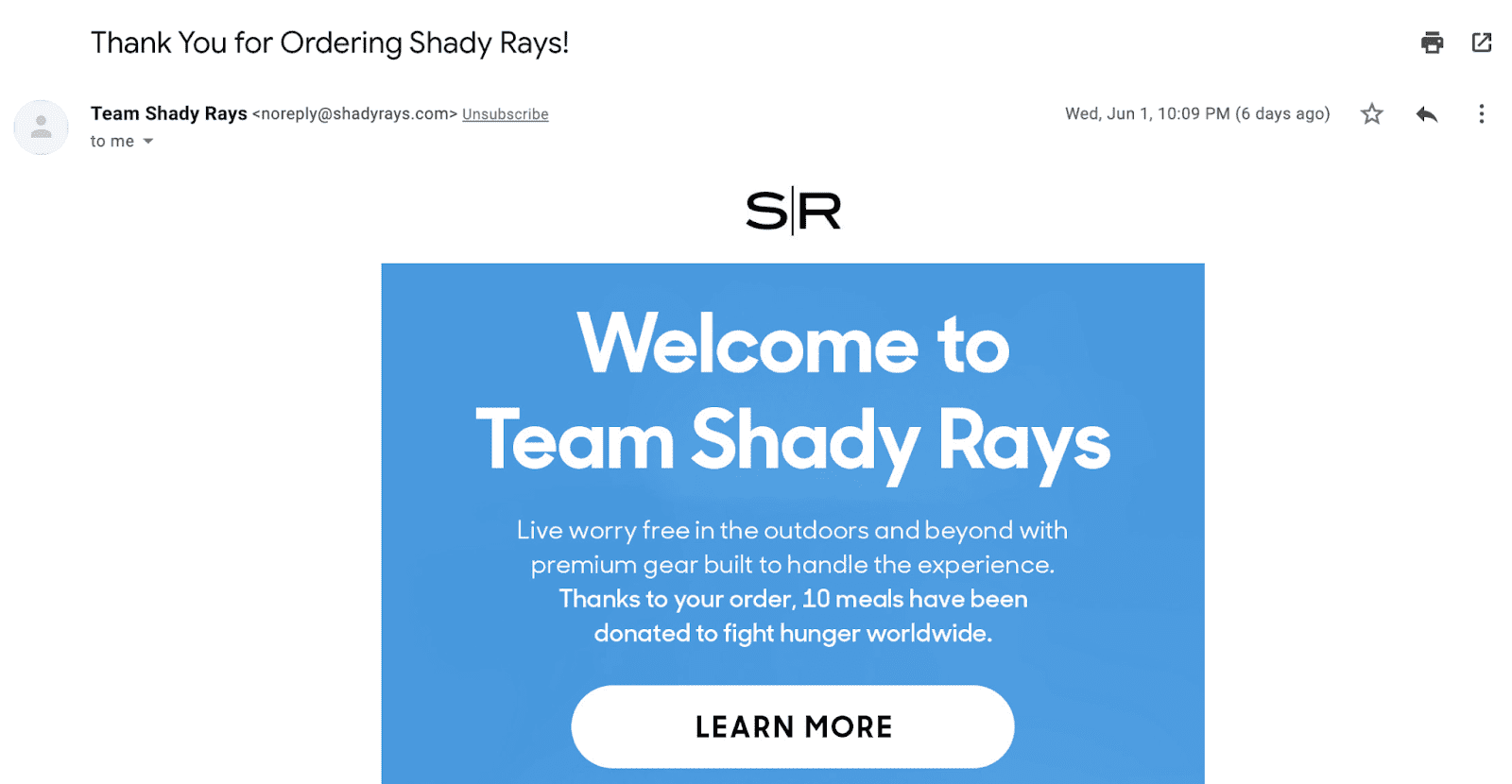
Within this email, customers learn about:
- Shady Rays’ vision and mission
- Its founder and the company’s story
- How to connect with Shady Rays on social media (a great move for encouraging customer engagement)
3. Get Tech-Savvy
Customer retention might be tricky for ecommerce brands, but luckily we live in 2022, and there are a bunch of really great tools to help with retention and churn deflection.
Chargebee Retention (previously Brightback) is all about revolutionizing the customer cancel journey. Move away from generic cancel pages to intelligent cancel experiences that can grasp customer intrigue with personalized design, messaging, offers, and surveys. All this while also providing relevant data on how your customers interact with the hosted cancel experiences. Your retention will never be the same.
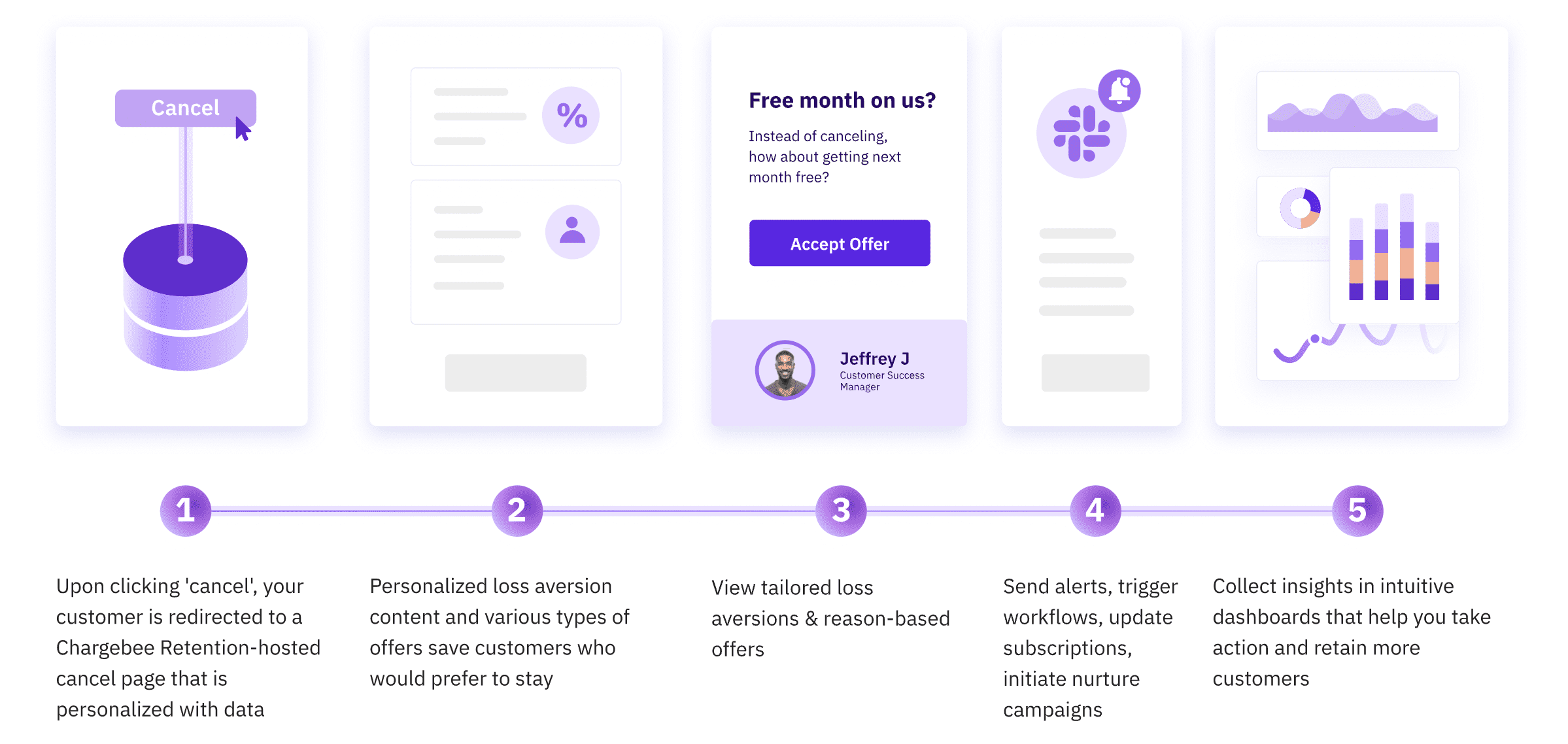
4. Supplement Communications With SMS Marketing
SMS is a growing channel for customer communications, and because of that, it can be a much more effective method for reaching your buyer than email.
SMS has a 42% average read rate (vs. 32% for email) and a whopping 98% open rate (vs. around 20% for email).
Much of this difference comes down to the fact that email marketing is pretty saturated, while SMS is still fairly new, so there’s less noise to break through. In any case, text marketing still presents a valuable opportunity for eCommerce brands.
GREATS, an eCommerce sneaker brand, for instance, uses SMS messaging as part of their abandoned checkout follow-up sequence.
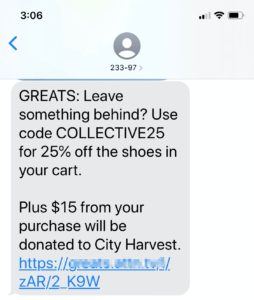
5. Develop A Comprehensive Customer Onboarding Program
Customer onboarding programs are crucial for eCommerce subscription brands. Getting a prospective customer to sign up is only half the battle, especially if you operate on a monthly subscription model).
Onboarding is the first step in your retention strategy, starting with an informative welcome email.
Birchbox, a beauty, and grooming subscription box company, sends a simple “Here’s what to expect” email.
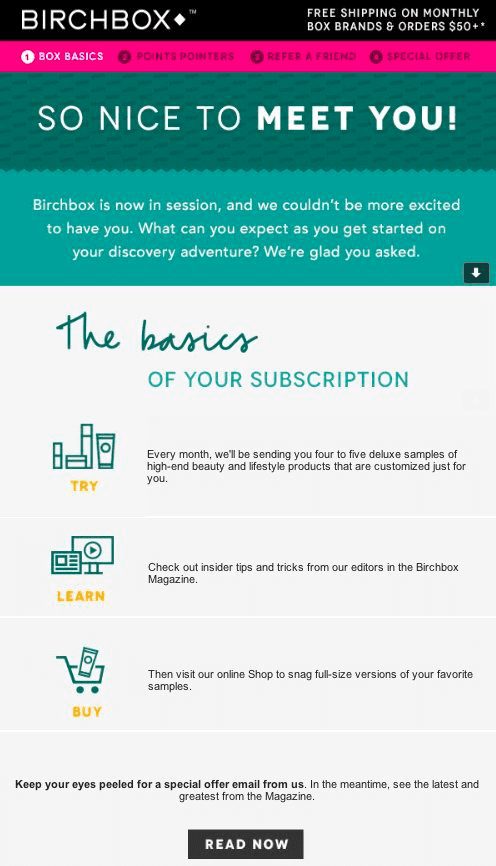
Setting and reiterating expectations is a great way to manage customer sentiment and avoid unhappy buyers.
Notice the final line of copy in Birchbox’s email: “Keep your eyes peeled for a special offer from us.”
This alludes to the next step in its onboarding sequence, a promotional offer unique to subscribers. Not only is this a good move in itself, but including a “Watch out for this” helps encourage engagement with future emails and influences open rates.
6. Personalize Communication Where Possible
Personalization is everything in eCommerce retention. Two-thirds of your buyers expect that you understand their individual needs and desires. 52% expect all of your offers to be personalized.
But personalization should go beyond simply using a customer’s name in your email sends.
For eCommerce brands, promotions should be based on product preferences, previous purchases, and buying characteristics.
For instance, Hallenstein Brothers, a men’s clothing brand, segments its email database using previous purchase information.
Those who’ve purchased a “box fit” tee in the past will receive promotional updates when similar items drop.
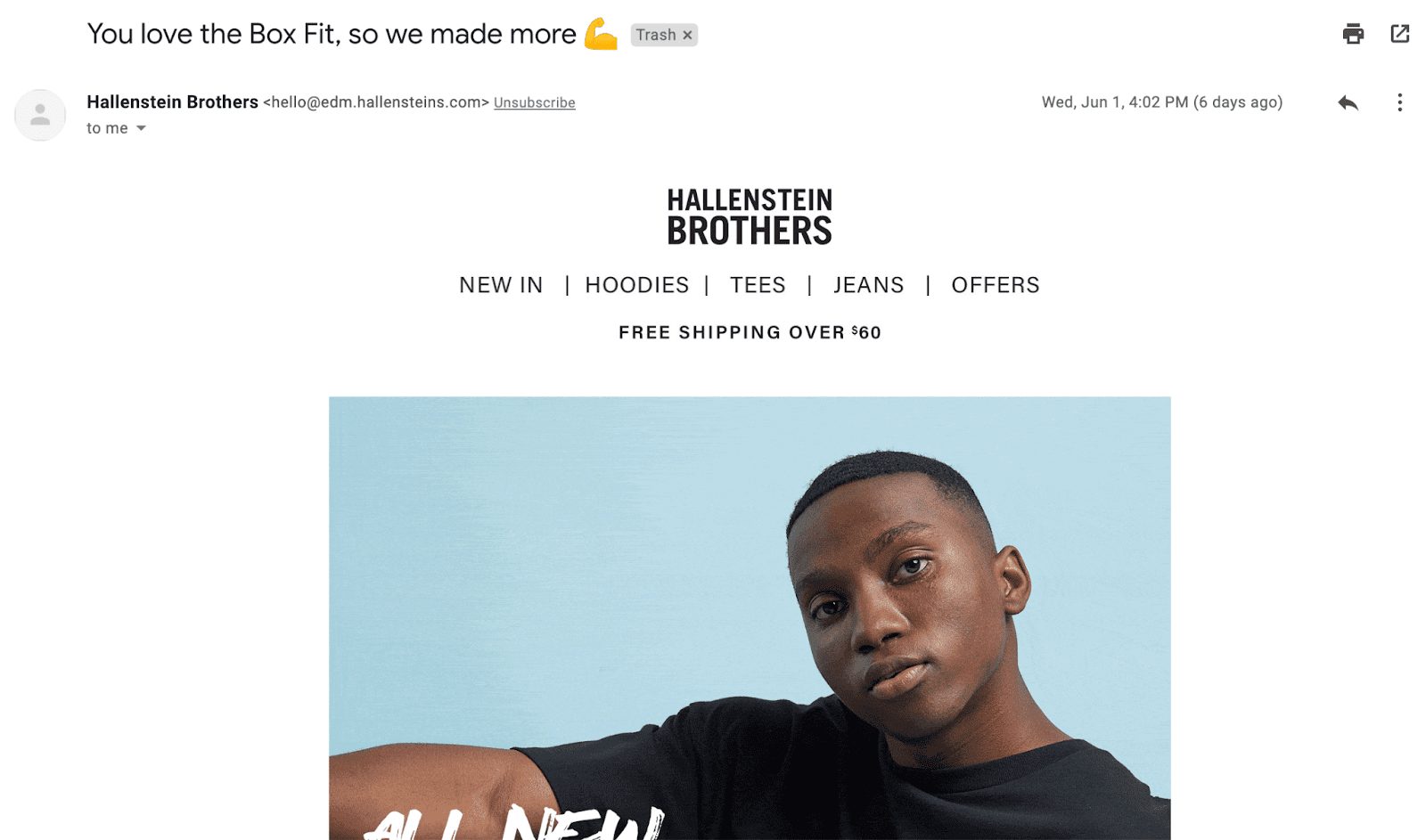
7. Develop A Customer Loyalty Program
Loyalty programs are an easy way to influence retention. The most simple version of the loyalty program is the coffee card (buy nine, get one free).
But eCommerce brands can get a little more playful with loyalty programs. Points systems are common, where buyers collect points for completing certain actions.
These might include:
- Signing up for an account
- Making their first purchase
- Offering points for every dollar they spend
- Submitting a Google review
- Referring a friend or family member
- Following your brand on social media
Skincare brand Glow Recipe has a great example of an eCommerce customer loyalty program.
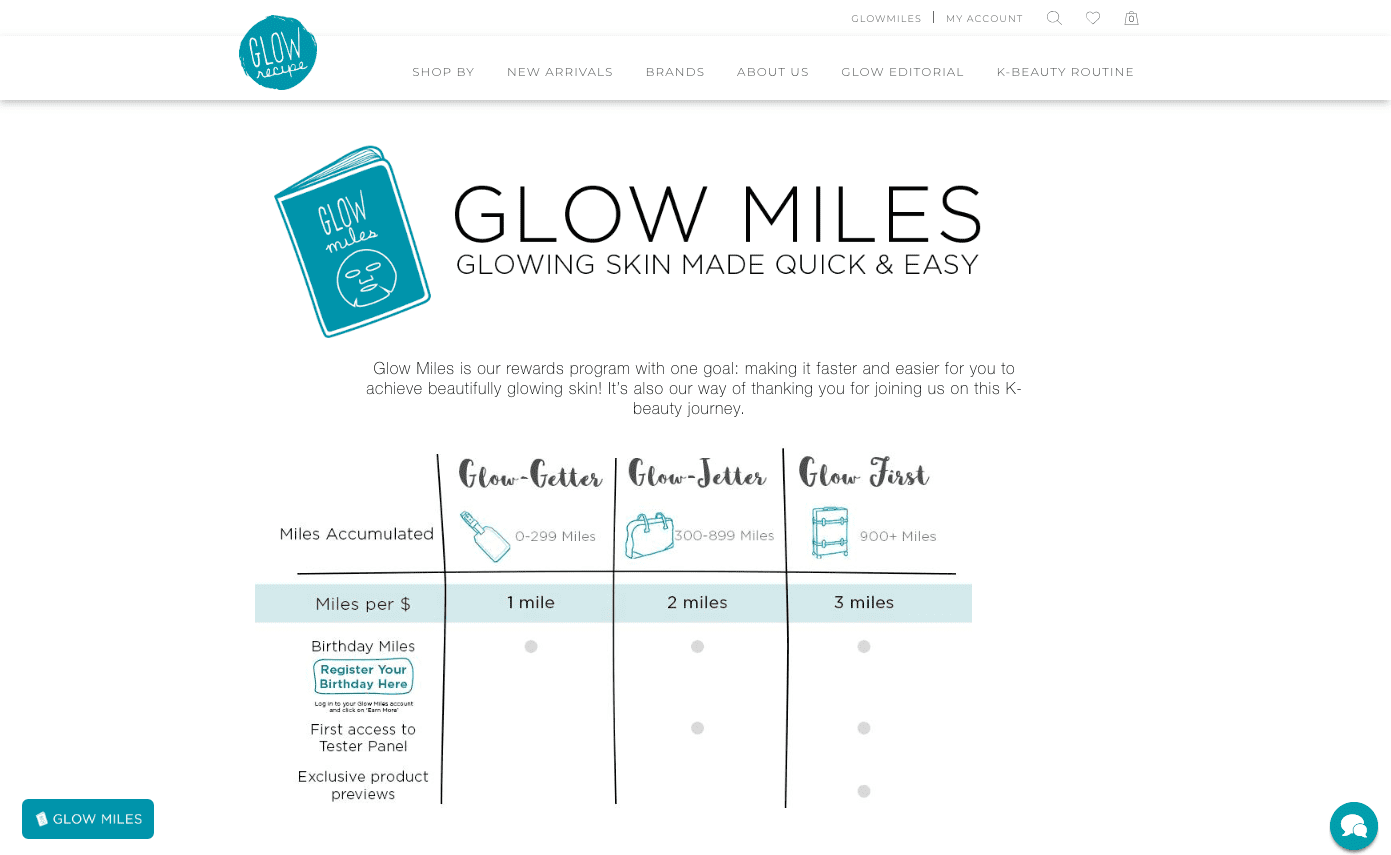
This example is powerful because Glow Recipe has gamified the process. Not only do customers collect Miles (points) for certain activities, but as they accumulate more Miles, they achieve new levels and unlock other exclusive benefits.
8. Get Active On Social Media
eCommerce brands with the strongest retention programs will be those that engage directly with their buyers on social media.
Take frank body, a cruelty-free skincare brand. The company shows its customers they’re valued by reposting user-generated content (UGC) on its Instagram profile.
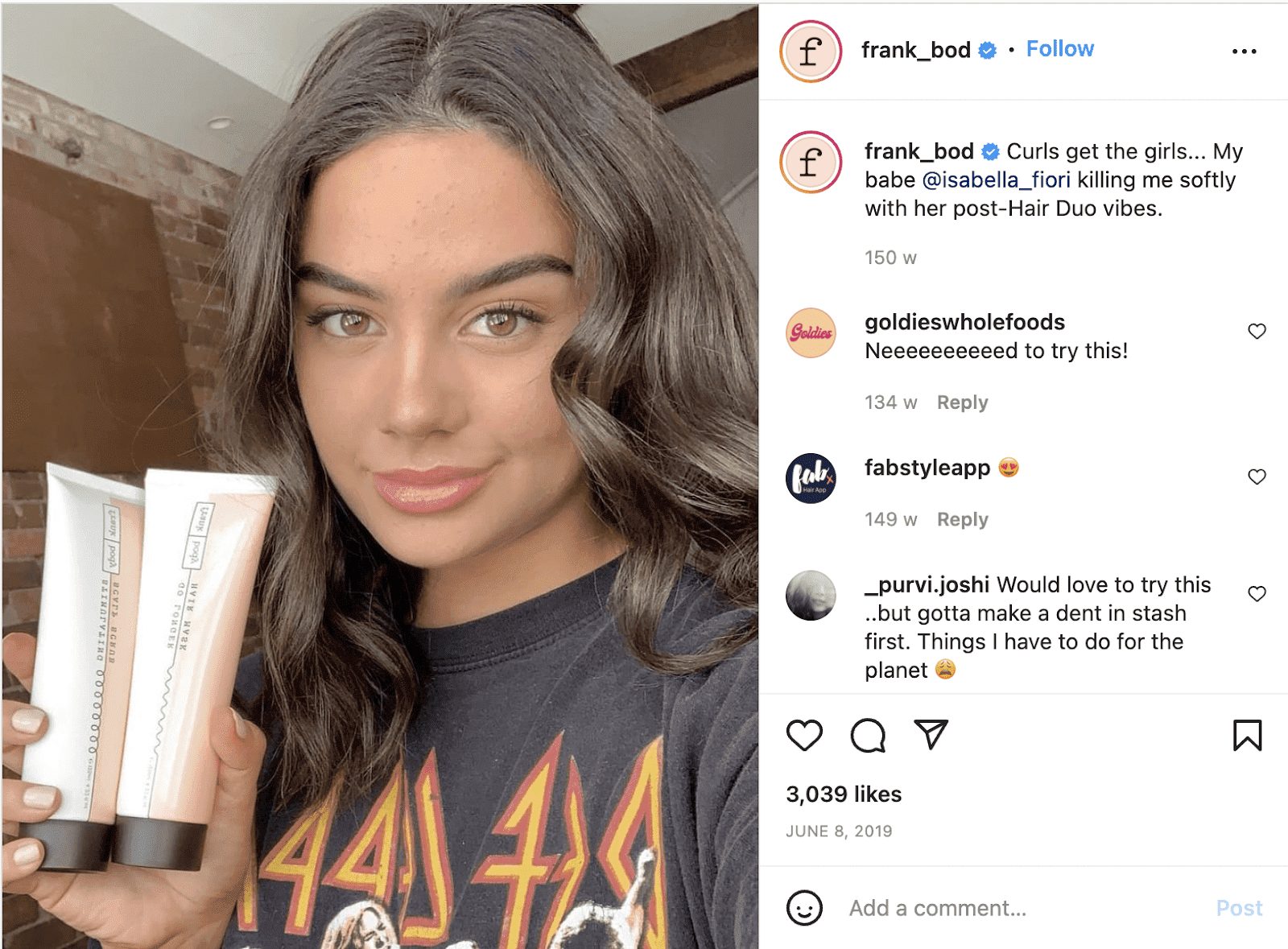
Retention-focused activities like these have a number of important effects:
- You show that specific customer that you value them
- You show other customers (or potential customers) how much you value your buyers
- You can demonstrate your product in action in a real-life context
- You can potentially leverage the audience of the person you’re shouting out and attract new customers
9. Use Referrals Programs To Encourage Engagement
Referrals are a great sign of customer loyalty. Buyers who’ve had a bad experience (or otherwise aren’t interested in making a second purchase) are unlikely to recommend your brand to a friend or family.
Some customers, however, need a little motivation to get talking.
Seamless shows a great example of how to use referral programs to drive new revenue and improve customer retention.
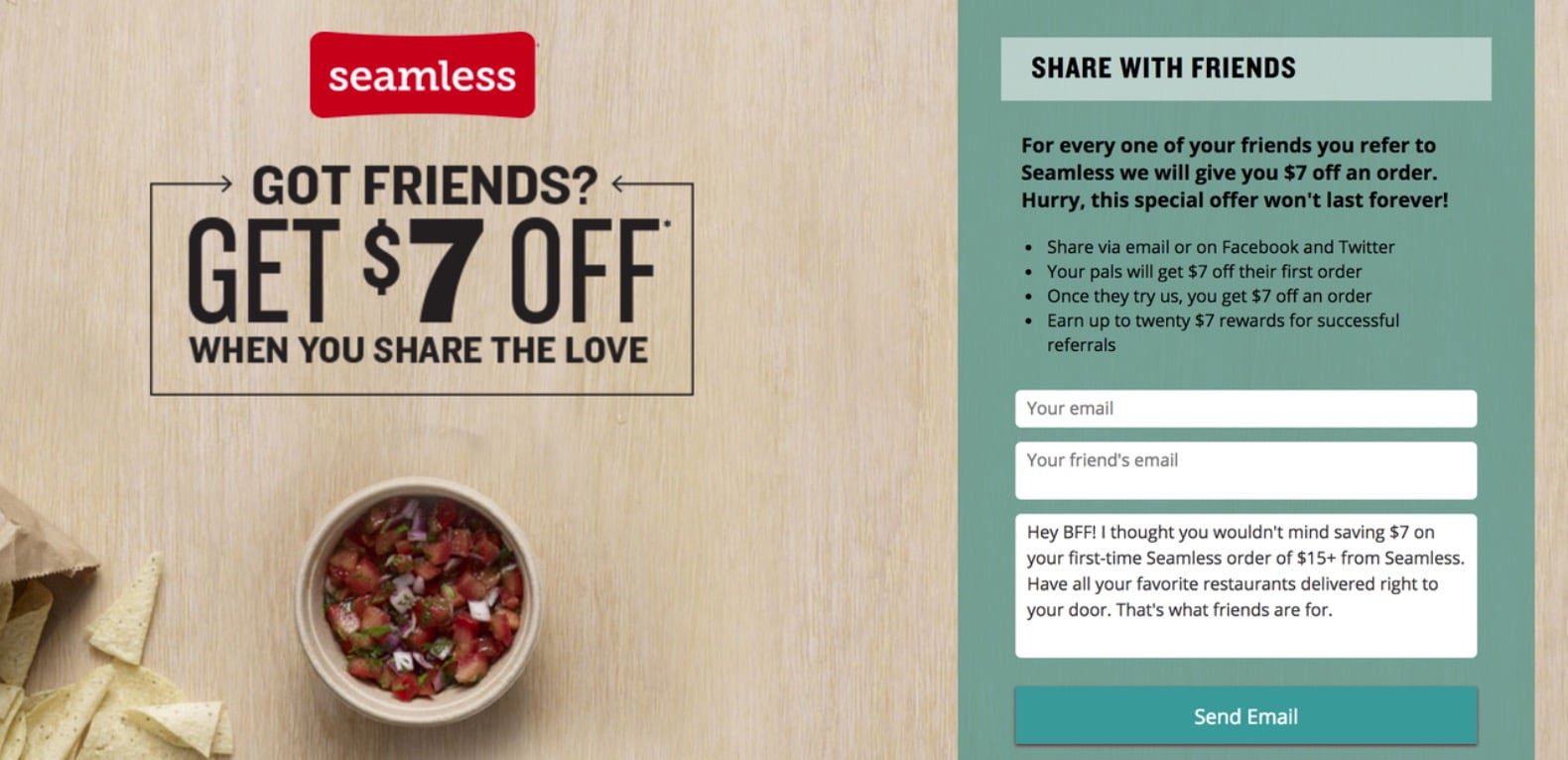
Notice how both parties in this transaction receive a benefit. The existing customer making the referral receives a $7 discount as a reward (making them feel valued for their recommendation but also encouraging a repeat purchase), and so does the referred friend (incentivizing their first purchase).
For customers, referring friends and family should be easy. Take a leaf out of Seamless’ book, and make referral offers shareable via email or social channels.
10. Invest In Internal SOPs
There is nothing more frustrating for buyers than a clunky, disconnected customer service experience.
Support reps who appear as if they don’t know how to solve a problem only alienate buyers, leading to subscription churn.
While your agents can’t know everything (especially new ones — ramp time needs to be considered), they can have access to that knowledge.
Focus on building internal SOPs (standard operating procedures) for solving customer complaints and challenges.
In your SOPs, cover aspects such as:
- Where to look for technical support material
- When to get support from an engineer
- When to escalate the issue to a manager
- Expectations for response times
- Communications guidelines (when to call, when to email, etc.)
11. Make Customer Account Access Easy
Customers should only ever have to enter their information once when they make their first purchase (and even then, you should make it easy for them by allowing fields to be auto-filled).
That means buyers should be able to set up an account (easily — don’t make them jump through a number of hoops) and store important information such as:
- Their name and other personal information
- Credit card details
- Delivery and billing addresses
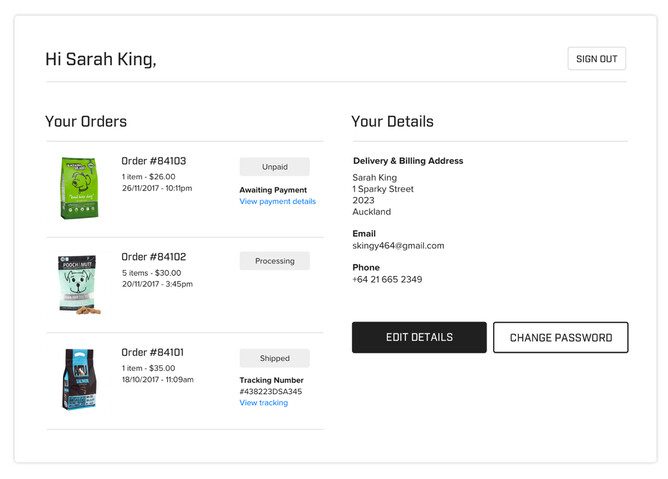
This means that when a repeat buyer or a subscriber returns to your site for a second purchase, all of their data is auto-populated, speeding up the process and reducing the likelihood of cart abandonment.
12. Use Email To Nurture Existing Relationships
Your retention marketing efforts shouldn’t all be focused on driving new revenue. Email marketing can be used simply to build relationships, educate readers, and continuously provide content that your audience will find valuable.
Framebridge, for example, provides actionable advice on hanging art (super relevant for its audience).

Use this kind of communication to build relationships with buyers that are based on value, not transactions.
13. Keep Customers Up To Date With Regular Notifications
A major component of success in customer communications is consistency.
That doesn’t mean, of course, that you should bombard them with promotional emails. There are more tactful ways to keep the communication line open with your customers.
Post membership sign-up SMS messages are always a good move. You can also send personalized whatsapp broadcast messages to update customers.

Contextual push notifications can be a great way to ensure that when you do send promotional offers, it’s relevant to the customer experience.

14. Survey Your Customers To Identify Areas For Improvement
Don’t forget to ask your customers how they’re doing!
Without keeping that communication line open, you’ll never know what buyers think of the customer experience (unless something goes wrong, then they’ll probably be in touch pretty quickly).
Use customer surveys to gain feedback, understand common failures or challenges in the customer experience, and identify problem areas.
Then, get real narrow, and use survey results to measure changes in customer perception post-implementation of new initiatives.
For instance, your initial survey might identify that your support team has room to improve. Following a series of training and development initiatives (and some new SOPs), you can send a more specific customer survey to understand the impact of those changes.

Conclusion
In 2022 and beyond, the eCommerce brands that win will be those that focus on retention.
They’ll be brands that build and nurture relationships with all buyers, encourage referrals and loyalty, and focus on retention metrics like purchase frequency and net promoter score.
For subscription-based eCommerce brands, subscription billing and managing recurring payments will also be crucial for minimizing churn and keeping the customer experience smooth.Check out our Complete Customer Retention Guide for Ecommerce Businesses, and learn how to build a solid retention strategy that helps you attract and retain customers.




